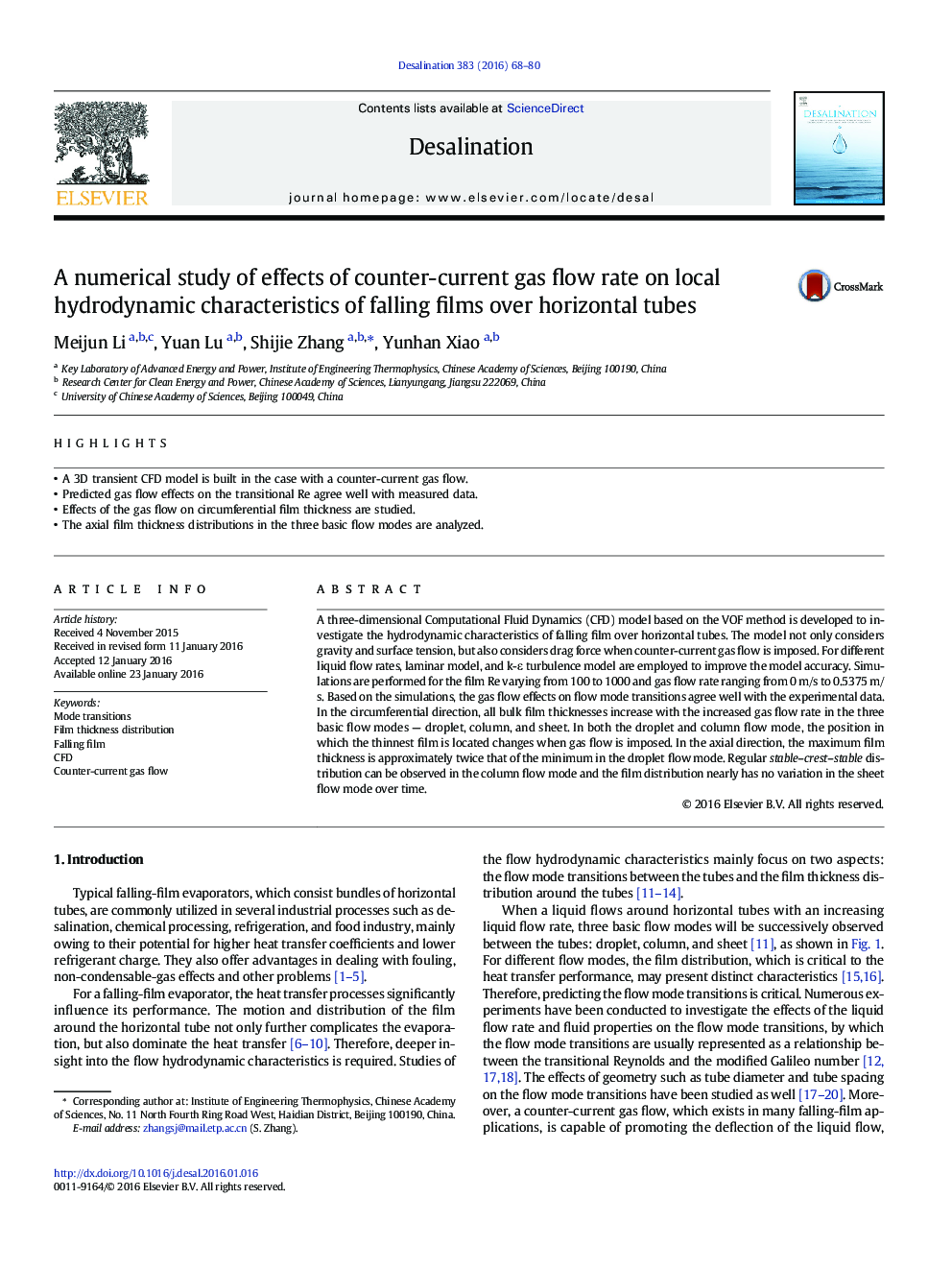| Article ID | Journal | Published Year | Pages | File Type |
|---|---|---|---|---|
| 622860 | Desalination | 2016 | 13 Pages |
•A 3D transient CFD model is built in the case with a counter-current gas flow.•Predicted gas flow effects on the transitional Re agree well with measured data.•Effects of the gas flow on circumferential film thickness are studied.•The axial film thickness distributions in the three basic flow modes are analyzed.
A three-dimensional Computational Fluid Dynamics (CFD) model based on the VOF method is developed to investigate the hydrodynamic characteristics of falling film over horizontal tubes. The model not only considers gravity and surface tension, but also considers drag force when counter-current gas flow is imposed. For different liquid flow rates, laminar model, and k-ε turbulence model are employed to improve the model accuracy. Simulations are performed for the film Re varying from 100 to 1000 and gas flow rate ranging from 0 m/s to 0.5375 m/s. Based on the simulations, the gas flow effects on flow mode transitions agree well with the experimental data. In the circumferential direction, all bulk film thicknesses increase with the increased gas flow rate in the three basic flow modes — droplet, column, and sheet. In both the droplet and column flow mode, the position in which the thinnest film is located changes when gas flow is imposed. In the axial direction, the maximum film thickness is approximately twice that of the minimum in the droplet flow mode. Regular stable–crest–stable distribution can be observed in the column flow mode and the film distribution nearly has no variation in the sheet flow mode over time.
